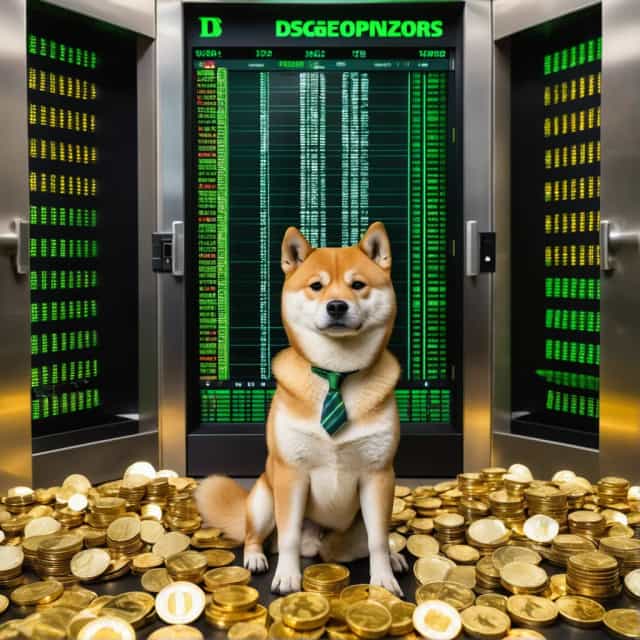
출처: Block Media
North Dakota to Introduce Roughrider Coin: A State-Issued Stablecoin Pegged to the U.S. Dollar by 2026
North Dakota has announced its ambitious plans to launch Roughrider Coin, the state's first stablecoin, backed 1:1 against the U.S. dollar. Scheduled for rollout in 2026, the project represents an innovative move to stake North Dakota’s position in the evolving stablecoin market. Developed in collaboration with global payments technology firm Fiserv, Roughrider Coin promises to facilitate seamless financial transactions while leveraging a secure and scalable digital infrastructure.
The Bank of North Dakota Leads Stablecoin Development
The Bank of North Dakota (BND), the country’s sole state-owned financial institution, will spearhead the issuance and management of Roughrider Coin. Established in 1919, BND has long been a cornerstone of North Dakota’s financial ecosystem, with assets exceeding $10 billion. Its unique structure allows the bank to reinvest revenues into state programs and drive economic growth across industries such as agriculture and commerce. This expertise positions BND as an ideal steward for the Roughrider Coin initiative, ensuring the token aligns with the state’s broader economic objectives.
The Roughrider Coin is designed to serve multiple purposes, including facilitating interbank transactions, enabling merchant payments, and supporting secure cross-border money transfers. Its initial availability will be exclusive to North Dakota-based community banks and credit unions, fostering local financial collaboration. In partnership with Fiserv, the token will operate on a trusted, state-of-the-art digital asset management platform designed for stablecoin services. Having processed over 35 billion merchant transactions in 2022, Fiserv adds proven expertise in payments infrastructure to the project. The Roughrider Coin’s interoperability with other stablecoins also positions it to integrate smoothly within the broader digital asset ecosystem.
Honoring Theodore Roosevelt’s Legacy
The name Roughrider Coin pays tribute to Theodore Roosevelt, the 26th U.S. President, whose ties to North Dakota are deeply ingrained in the state’s history. Roosevelt is celebrated for leading the Rough Riders cavalry regiment during the Spanish-American War, later settling in North Dakota during his post-political years. The choice of name underscores the state’s commitment to honoring Roosevelt’s legacy and bolstering its historical identity through this innovative financial venture.
Governor’s Vision and Insights from the Bank of North Dakota
Governor Kelly Armstrong has emphasized the significance of Roughrider Coin as part of North Dakota's broader strategy to innovate within the financial sector. Speaking on the project, Armstrong stated, “Issuing a stablecoin backed by real money demonstrates North Dakota's commitment to providing a safe, efficient financial ecosystem for its citizens.”
With the Roughrider Coin, Armstrong envisions fostering a financial environment that balances cutting-edge technology with consumer trust. Additionally, BND’s role ensures that the stablecoin aligns with the state’s priorities for economic development through liquidity services, loan participation, and secondary market operations.
Growing Competition and the Stablecoin Space
As Roughrider Coin prepares to debut, it joins a growing list of state-issued stablecoins poised to reshape the decentralized finance landscape. Wyoming launched its Frontier Stable Token (FRNT) earlier this year, distributing the digital asset across seven blockchain platforms before partnering with Hedera for operational collaboration in September. This reflects a broader trend among U.S. states capitalizing on the legislative and technological pathways created by the GENIUS Act, which established regulatory clarity for digital assets in July.
Despite major players like Tether (USDT) and USD Coin (USDC) dominating the stablecoin space, new entrants are bringing fresh perspectives and expanded functionalities. For instance, crypto derivatives platform Hyperliquid introduced USDH in September—a stablecoin tied to its proprietary ecosystem, driving over $330 billion in trading volume by mid-2023. Similarly, Cloudflare unveiled NET Dollar, a dollar-pegged stablecoin engineered for instant programmable payments and AI-driven financial transactions.
Industry Perspectives on Emerging Stablecoin Diversity
The influx of new stablecoins has stirred significant discourse among financial and tech leaders, with many viewing the proliferation as a positive sign of the sector’s maturation rather than oversaturation. Austin Ballard, Partnerships Manager at Offchain Labs, observed, “The growing number of teams launching or utilizing stablecoins underscores the technology's ability to solve real-world problems for enterprises and consumers alike. In the long term, this competition will drive net benefits for the industry.”
This wave of creativity encourages innovation within the stablecoin space and highlights the substantial demand for versatile financial solutions that cater to business and consumer needs alike. North Dakota’s Roughrider Coin, supported by BND’s robust financial infrastructure and Fiserv’s scalable technology, signals a pivotal evolution. By addressing local and national financial demands, Roughrider Coin can position the state as an influential player in the decentralized economy.
Conclusion
The Roughrider Coin represents a bold stride forward for North Dakota, blending historical homage with modern technological innovation. As the stablecoin market grows increasingly competitive, North Dakota’s plan to launch a state-issued token aligns with the trends reshaping global finance. The collaboration between the Bank of North Dakota and Fiserv underscores the project’s credibility, offering a stablecoin that could redefine how financial transactions are conducted across the state and beyond. With its commitment to providing a secure, efficient financial ecosystem, North Dakota has positioned Roughrider Coin as a potential model for future state-based digital assets.










